Enzymes(酶)
Enzymes are very efficient and specific catalyst proteins which react with 1 or few types of substrates in biochemical reactions and are responsible for bringing about almost all of the chemical reactions in living organisms. Enzymes speed up reactions by providing an alternative reaction pathway of lower activation energy. Without enzymes, reactions take place at a rate far too slow for the pace of metabolism which means that they speed up the chemical reactions in living things.
There are 2 types of enzymes, ones that help join specific molecules together to form new molecules & others that help break specific molecules apart into separate molecules. Enzymes play many important roles ouside the cell as well. One of the best examples of this is the digestive system. For instance, it is enzymes in your digestive system that break food down in your digestive system break food down into small molecules that can be absorbed by the body. Some enzymes in your digestive system break down starch, some proteins and others break down fats. The enzymes used to digest our food are extra-cellular since they are located outside our cells & enzymes inside our cells are intra-cellular enzymes. Enzymes are used in ALL chemical reactions in living things; this includes respiration, photosynthesis, movement growth, getting rid of toxic chemicals in the liver and so on. Enzymes are proteins that must have the correct structure to be active. They are very easily affected by heat, pH and heavy metal ions.
Ribonucleoprotein enzyme catalytic activity is located in the protein part but for some the catalytic activity is in the RNA part. A catalyst is any substance which makes a chemical reaction go faster, without itself being changed. A catalyst can be used over and over again in a chemical reaction and does not get used up.
Enzymes lower the amount of activation energy needed by binding to the reactants of the reaction they catalyze, thus speed up the reaction and can process millions of molecules per second. Enzymes are typically large proteins with high molecular weight that permit reactions to go at conditions that the body can tolerate.
Enzyme nomenclature is based on what the enzyme reacts with & how it reacts along with the ending ase.
Enzymes must get over the activation energy hurdle.
Enzymes change how a reaction will proceed which reduces the activation energy and makes it faster. The more we increase the enzyme concentration the faster the reaction rate for non-catalyzed reactions. Enzymes that are catalyzed reactions also increase reaction rate at higher level of concentration but up to a certain point called Vmax which means that the enzyme has reached its maximum point. The reaction is limited by both the concentrations of the enzyme and substrate. Enzymes as catalysts take part in reactions which provide an alternative reaction pathway. Enzymes do not undergo permanent changes and remain unchanged at the end of the reaction. They only change the rate of reaction, not the position of the equilibrium.Enzymes as catalysts are highly selective by only catalysing specific reactions due to the shapes of the enzyme’s molecule.
Enzymes contain a globular protein part called apoenzyme and a non-protein part named cofactor or prosthetic group or metal-ion-activator. Changes in temperature and pH have great influence on the intra- and intermolecular bonds that hold the protein part in their secondary and tertiary structures.
Examples of cofactors are 1. Prosthetic group that are permanently bound to the enzyme. 2. Activator group which are cations (positively charged metal ions) & temporarily bind to the active site of the enzyme. 3.Coenzymes, usually vitamins or made from vitamins which are not permanently bound to the enzyme molecule, but combine with the enzyme-substrate complex temporarily. Enzymes require the presence cofactors before their catalytic activity can be exerted. This entire active complex is referred to as the holoenzyme.
Without enzymes, our guts would take weeks to digest our food, our muscles, nerves and bones would not work properly and so on…
Main Enzyme category groups:
Oxidoreductases:
All enzymes that catalyse oxido-reductions belong in this class. The substrate oxidized is regarded as a hydrogen or electron donor. The classification is based on 'donor:acceptor oxidoreductase'. The common name is 'dehydrogenase', wherever this is possible; as an alternative, 'acceptor reductase' can be used. 'Oxidase' is used only where O2 is an acceptor. Classification is difficult in some cases, because of the lack of specificity towards the acceptor.
Transferases:
Transferases are enzymes that transfer a group, for example, the methyl group or a glycosyl group, from one compound (generally regarded as donor) to another compound (generally regarded as acceptor). The classification is based on the scheme 'donor:acceptor grouptransferase'. The common names are normally formed as 'acceptor grouptransferase' or 'donor grouptransferase'. In many cases, the donor is a cofactor (coenzyme) that carries the group to be transferred. The aminotransferases constitute a special case.
Hydrolases:
These enzymes catalyse the hydrolysis of various bonds. Some of these enzymes pose problems because they have a very wide specificity, and it is not easy to decide if two preparations described by different authors are the same, or if they should be listed under different entries. While the systematic name always includes 'hydrolase', the common name is, in most cases, formed by the name of the substrate with the suffix -ase. It is understood that the name of the substrate with this suffix, and no other indicator, means a hydrolytic enzyme. It should be noted that peptidases have recommended names rather than common names.
Lyases:
Lyases are enzymes that cleave C-C, C-O, C-N and other bonds by means other than by hydrolysis or oxidation. They differ from other enzymes in that two (or more) substrates are involved in one reaction direction, but there is one compound fewer in the other direction. When acting on the single substrate, a molecule is eliminated and this generates either a new double bond or a new ring. The systematic name is formed according to 'substrate group-lyase'. In common names, expressions like decarboxylase, aldolase, etc. are used. 'Dehydratase' is used for those enzymes that eliminate water. In cases where the reverse reaction is the more important, or the only one to be demonstrated, 'synthase' may be used in the name.
Ligases:
Ligases are enzymes that catalyse the joining of two molecules with concomitant hydrolysis of the diphosphate bond in ATP or a similar triphosphate. 'Ligase' is often used for the common name, but, in a few cases, 'synthase' or 'carboxylase' is used. 'Synthetase' may be used in place of 'synthase' for enzymes in this class.
Products for Enzymes
- 41701(11)
- Activating Transcription Factor(3)
- Adenylate Kinase(10)
- AHCY(3)
- Aldolase(9)
- Asparaginase(5)
- Aurora Kinase(18)
- Beta Lactamase(3)
- Calcium and Integrin Binding(2)
- Calcium/Calmodulin-Dependent Protein Kinase(4)
- Carbonic Anhydrase(49)
- Casein Kinase(36)
- Cathepsin(52)
- Chitinase(5)
- Creatin Kinases(9)
- Cyclin(7)
- Cyclin-Dependent Kinase(18)
- Cyclophilin(23)
- Deaminase(14)
- Decarboxylase(12)
- Dehydrogenase(96)
- Discoidin Domain Receptor Tyrosine Kinase(2)
- DNA Polymerase(4)
- EGF Receptor(3)
- Endonuclease(6)
- Enolase(10)
- Enterokinase(5)
- Epimerase(3)
- Esterase(15)
- FGF Receptors(12)
- FK506 Binding Protein(10)
- Fructosamine 3 Kinase(2)
- Galactosidase(5)
- Glucosidase(32)
- Gluteradoxin(7)
- Glycogen synthase kinase(2)
- Glycosylase(10)
- Glyoxalase(3)
- Granzyme(7)
- Guanylate Kinase(2)
- Heparanase(2)
- Histone Deacetylase(3)
- Hydratase(10)
- Hydrolase(33)
- Hydroxylase(6)
- Isomerase(26)
- Jun N-terminal Kinase(1)
- Jun Proto-Oncogene(2)
- Kallikrein(26)
- Ligase(4)
- Lipase(14)
- Lipocalin(6)
- Lyase(9)
- LYVE1(3)
- Mitogen-Activated Protein Kinase(16)
- MMP(68)
- Mutase(11)
- Natural Enzymes(4)
- Nuclease(18)
- Nucleotidase(4)
- Nudix Type Motif(11)
- Other Enzymes(63)
- Oxidase(23)
- Oxygenase(12)
- Paraoxonase(3)
- Peptidase(41)
- Peroxiredoxin(10)
- Phosphatase(150)
- Phosphorylase(9)
- PI3-kinase(5)
- Polymerase(13)
- PPARG(2)
- Protease(15)
- Proteasome(54)
- Protein Kinase Akt1/PKB alpha(4)
- Protein Kinase-A(7)
- Protein Kinase-C(3)
- Protein Kinases(86)
- Protein Tyrosine Phosphatase(10)
- Reductase(60)
- Secreted Phospholipase A2(10)
- Serine Threonine Kinase(4)
- Sulfatase(8)
- Synthase(23)
- Synthetase(33)
- TGFBR(3)
- TGM2(3)
- TIMP(10)
- TPA(4)
- Transferase(156)
- Tyrosine Kinase(9)
- Ubiquitin Conjugating Enzyme(39)
- Uromodulin(4)
- VEGF Receptors(14)
- Transaminase(19)
- Hexokinase(6)
- TIE1(6)
- Cat.No. 产品名称 Information
-
GP22403
XYLT2 Human
Xylosyltransferase 2 Human Recombinant

-
GP22404
YARS Human
Tyrosyl-tRNA Synthetase Human Recombinant

-
GP22405
YARS2 Human
Tyrosyl-tRNA Synthetase 2 Human Recombinant

-
GC64992
YH-306
YH-306 是一种抗肿瘤剂。YH-306 通过 FAK 通路抑制结直肠肿瘤的生长和转移。 YH-306 显着抑制结直肠癌细胞的迁移和侵袭。YH-306 有效抑制不受抑制的增殖并诱导细胞凋亡 (apoptosis)。YH-306 抑制 FAK、c-Src、桩蛋白和 PI3K、Rac1 的激活以及 MMP2 和 MMP9 的表达。YH-306 还抑制肌动蛋白相关蛋白 (Arp2/3) 复合物介导的肌动蛋白聚合。
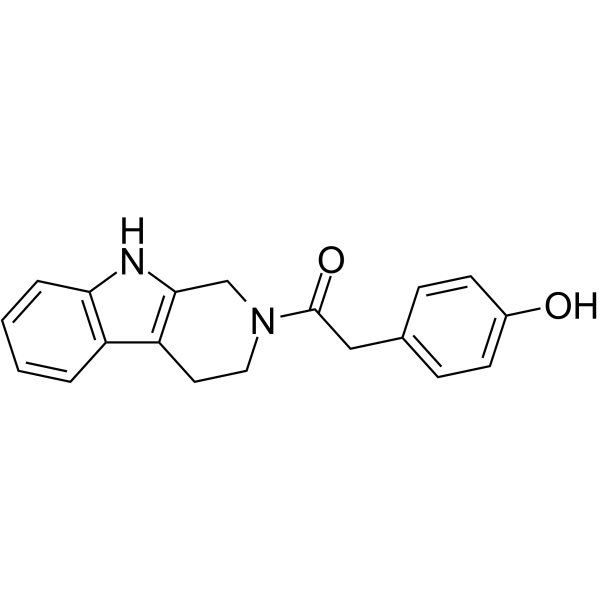
-
GP22406
YOD1 Human
YOD1 Human Recombinant

-
GP22653
YWHAB Human
Tyr-3/Trp- 5 Monooxygenase Activation Protein Beta Human Recombinant

-
GP22654
YWHAB Human, His
Tyr-3/Trp-5 Monooxygenase Activation Protein, Beta, Human Recombinant, His Tag

-
GP22655
YWHAE Human
Tyr-3/Trp- 5 Monooxygenase Activation Protein Epsilon Human Recombinant

-
GP22656
YWHAE Human, His
Tyr-3/Trp-5 Monooxygenase Activation Protein, Epsilon Human Recombinant, His Tag

-
GP22657
YWHAG Human
Tyr-3/Trp-5 Monooxygenase Activation Protein Gamma Human Recombinant

-
GP22658
YWHAG Human, His
Tyr-3/Trp-5 Monooxygenase Activation Protein Gamma Human Recombinant, His Tag

-
GP22660
YWHAH Human
Tyr-3/Trp-5 Monooxygenase Activation Protein ETA Human Recombinant

-
GP22659
YWHAH Human, His
Tyr-3/Trp-5 Monooxygenase Activation Protein ETA Human Recombinant, His Tag

-
GP22661
YWHAQ Human
Tyr-3/Trp- 5 Monooxygenase Activation Protein Theta Human Recombinant

-
GP22662
YWHAZ Human
Tyr-3/Trp- 5 Monooxygenase Activation Protein Zeta Human Recombinant

-
GC73810
Z-Arg-Arg-βNA acetate
Z-Arg-Arg-βNA acetate是蛋白酶组织蛋白酶B的敏感二肽底物,对蛋白酶H和L具有抗性。
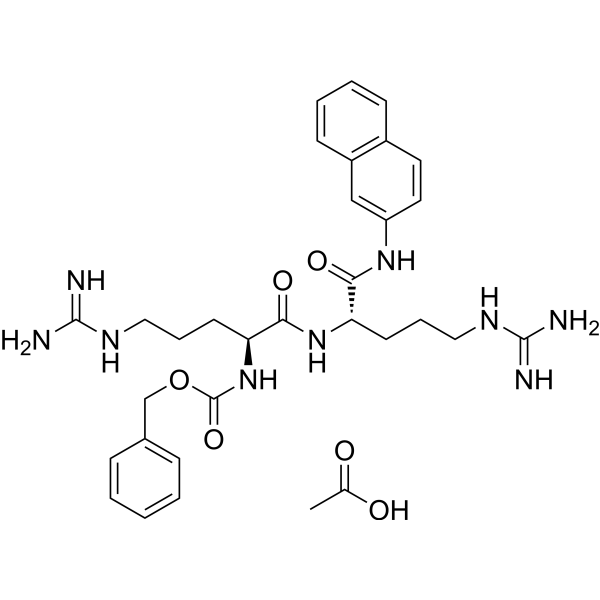
-
GC70709
Z-Arg-Arg-AMC hydrochloride
Z-Arg-Arg-AMC hydrochloride是组织蛋白酶B的选择性底物。
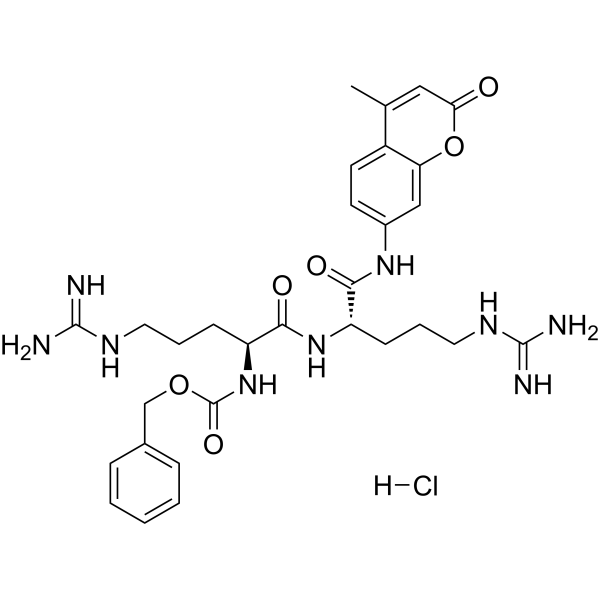
-
GC70845
Z-FF-FMK
Z-FF-FMK是一种选择性组织蛋白酶- l抑制剂。
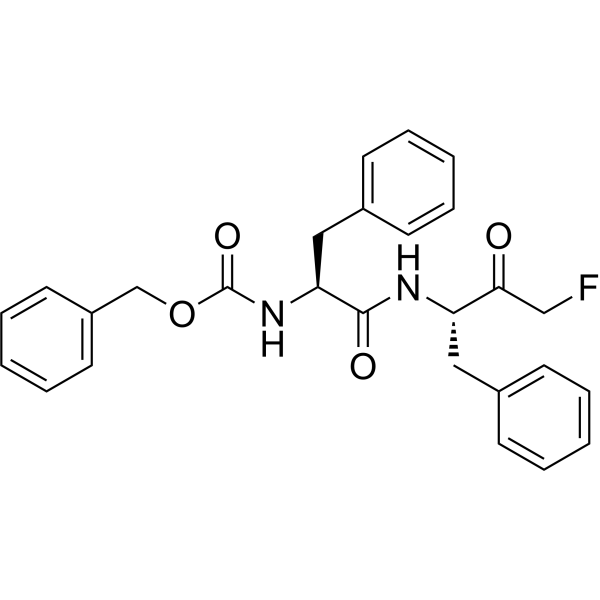
-
GC72712
Z-FG-NHO-BzOME
Z-FG-NHO-BzOME是一种半胱氨酸蛋白酶抑制剂,选择性抑制组织蛋白酶B、组织蛋白酶L、组织蛋白酶S和木瓜蛋白酶。

-
GA23863
Z-Leu-Val-Gly-diazomethylketone
Z-Leu-Val-Gly-diazomethylketone 是一种可渗透细胞且不可逆的半胱氨酸蛋白酶抑制剂。

-
GC71347
Z-Nle-Lys-Arg-AMC acetate
Z-Nle-Lys-Arg-AMC acetate是一种荧光肽底物,专门监测组织蛋白酶B在广泛的pH范围内的活性。
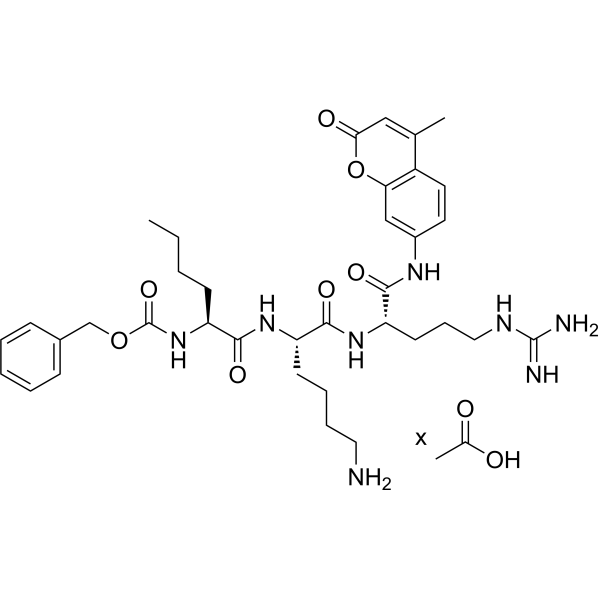
-
GC72234
Z-Phe-Arg-pNA
Z-Phe-Arg-pNA是组织蛋白酶L的底物。
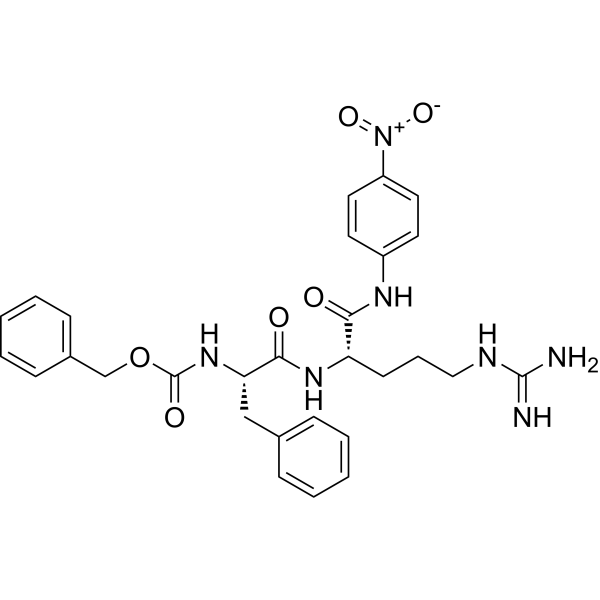
-
GC62239
Zetomipzomib
KZR-616
KZR-616 是首创的免疫蛋白酶体 (immunoproteasome) 抑制剂,选择性靶向免疫蛋白酶体亚基 LMP7 (IC50: 39/57 nM=hLMP7/mLMP7) 和 LMP2 (IC50: 131/179 nM=hLMP7/mLMP7)。KZR-616 用于多种自身免疫性疾病的潜力。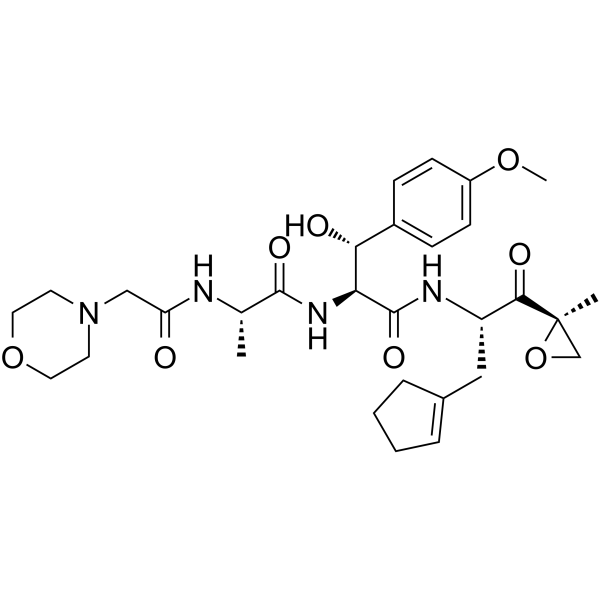
-
GC70395
Zetomipzomib maleate
Zetomipzomib maleate是一种免疫蛋白酶体抑制剂,其选择性靶向免疫蛋白酶体的LMP7(IC50:39/57 nM=hLMP7/mLMP7)和LMP2(IC50:131/179 nM=hLM2/mLMP2)亚基。
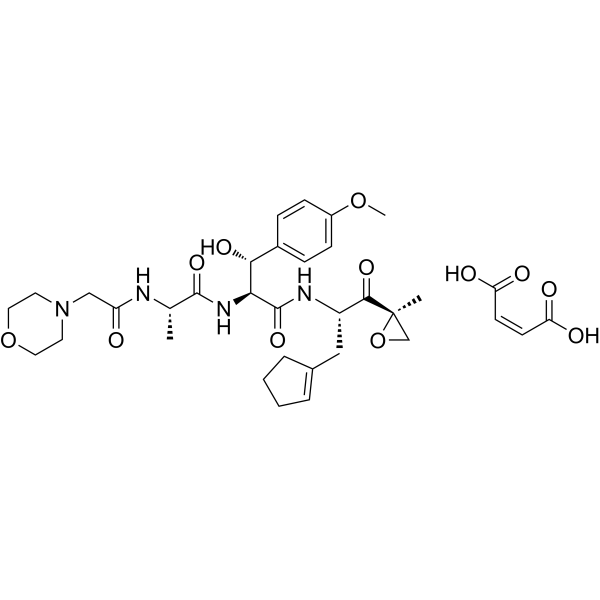
-
GC18533
ZLDI-8
ZLDI-8 是一种 Notch 激活/切割酶 ADAM-17 抑制剂,可抑制 Notch 蛋白的切割。 ZLDI-8 降低促存活/抗凋亡和上皮间质转化 (EMT) 相关蛋白的表达。 ZLDI-8 还是一种竞争性且不可逆的酪氨酸磷酸酶 (Lyp) 抑制剂,IC50 为 31.6 μM,Ki 为 26.22 μM。 ZLDI-8 抑制 MHCC97-H 细胞的生长,IC50 为 5.32 μM。
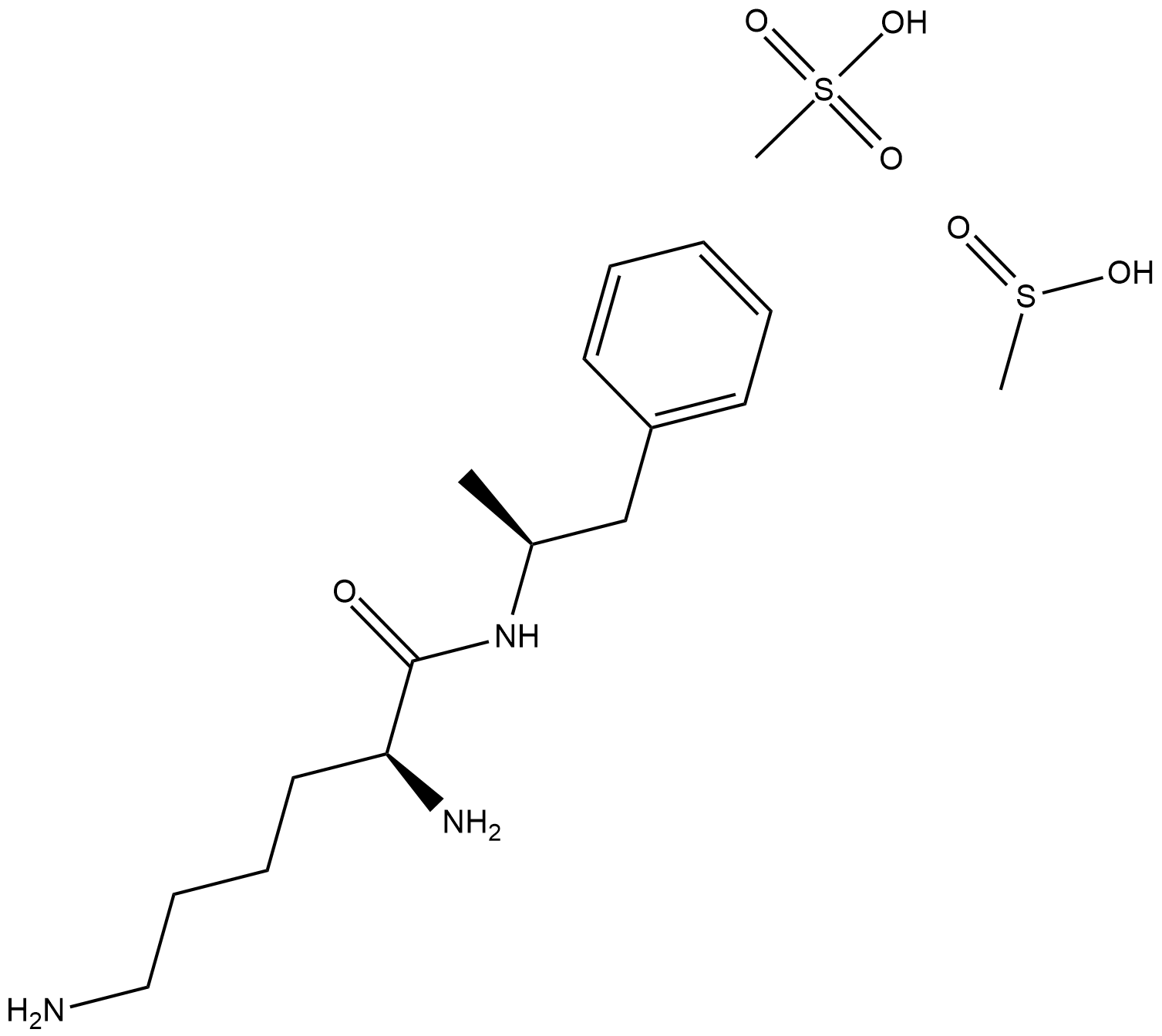
-
GC45802
Zonisamide-13C2,15N
An internal standard for the quantification of zonisamide





